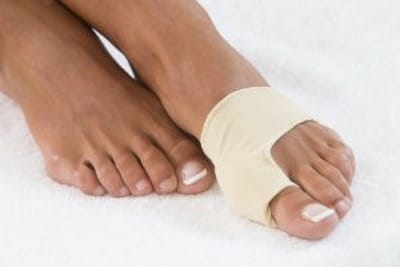Bunions
Bunion Surgery for a Severe Deformity
High heels, mules, sandals, flip flops, pumps, platforms, flats, wedges, clogs, and sneakers: every single type of shoe could aggravate a bunion if it doesn’t fit your foot properly. Bunions can sneak up on anyone. At Richardson Podiatry Center, we’re here to guide you through a proactive decision you can make if you have severe pain—bunion surgery.
Big Toe, Meet Little Toes
When you have a bunion, it means that the tissue or bone around your big toe has become deformed. Your toe will point in toward your little toes, and your first metatarsal bone will point out away from your foot. The lump you see on the side of your foot—that’s the metatarsophalangeal (MTP) joint sticking out.
Watch Your Irregular Step!
Placing an uneven amount of pressure on your foot and your MTP joint is what ultimately causes you to develop this deformity. You could have an irregular step from wearing shoes that are too tight, having a condition like arthritis, previously injuring your foot, excessively pronating your feet when you walk, and wearing high heels. Foot type is also passed down from your parents, which could make you more prone to getting bunions if the conditions are just right.
You Will Not Like What You See – or Feel
Bunion Surgery: Only for the Severe
We will always recommend conservative treatment before we jump to suggestions of bunion surgery. That’s because the treatment may limit your mobility and keep you from performing the activities you were able to do before. You may experience stiffness, numbness, swelling, and a slowdown in the healing process, which could put you at risk for infection. After it’s over, you need to be mentally and physically prepared to know that your bunion could return, you could suffer nerve damage, and you still may have discomfort.
However, this is the only way to correct the physical mechanics of the joint that’s sticking out and hurting you immensely. You might be in so much pain that you can’t even wear comfortable shoes and orthotics without feeling the ache. If your problems are just too agonizing, a procedure may be your only option.
Depending on how bad your issue is, there are several different types of bunion surgery. A mild problem would require removal of the deformed bone and a readjustment of the muscles and tendons around the area. For moderate cases, the bone is cut and moved back into place with a repositioning of the ligaments and tendons. In severe cases, the bone is cut and the deformity is removed, followed by a rearrangement. When someone has arthritis, an artificial joint goes in to replace the decrepit one.
Once you have bunions, they will continue to grow if you don’t change your footwear and take preventative measures. The only way to get rid of bunions is surgery, but we will exhaust every alternative before we suggest that you undergo the procedure. Put your feet into an expert’s care. Call Dr. David Haddad at the Richardson Podiatry Center at (972) 690-5374 or make an appointment request online. We understand what you’re going through and want to help banish your bunions.

